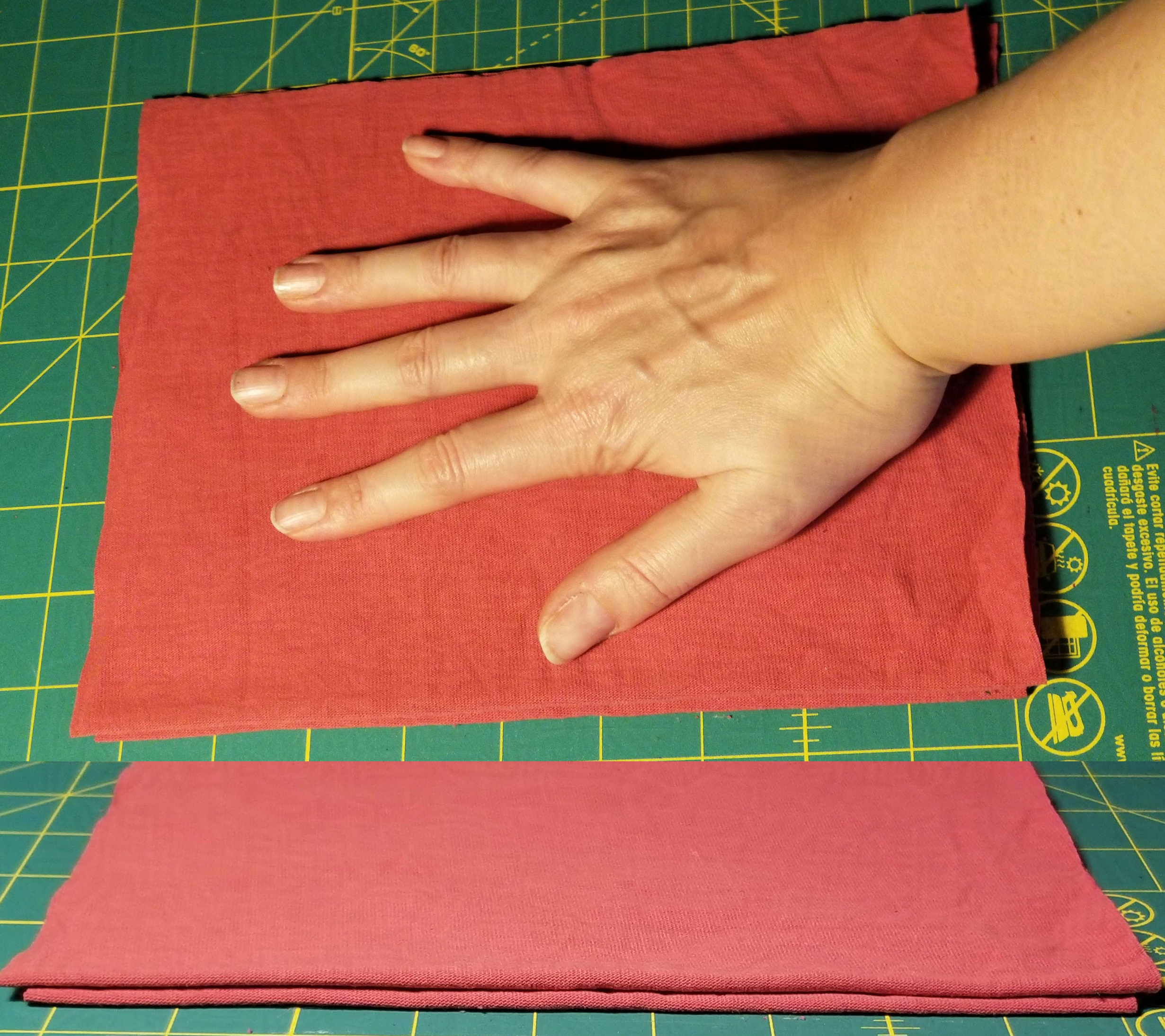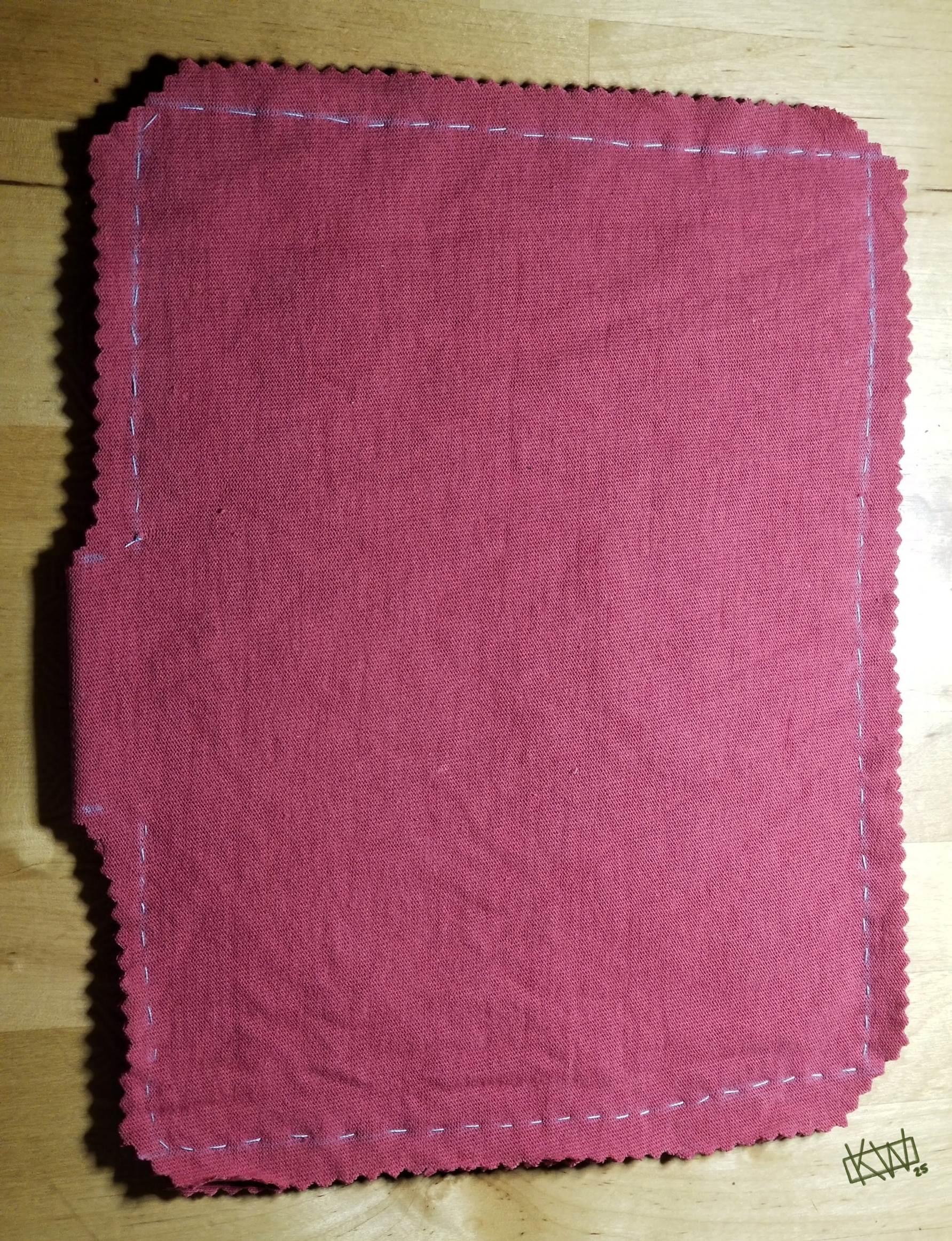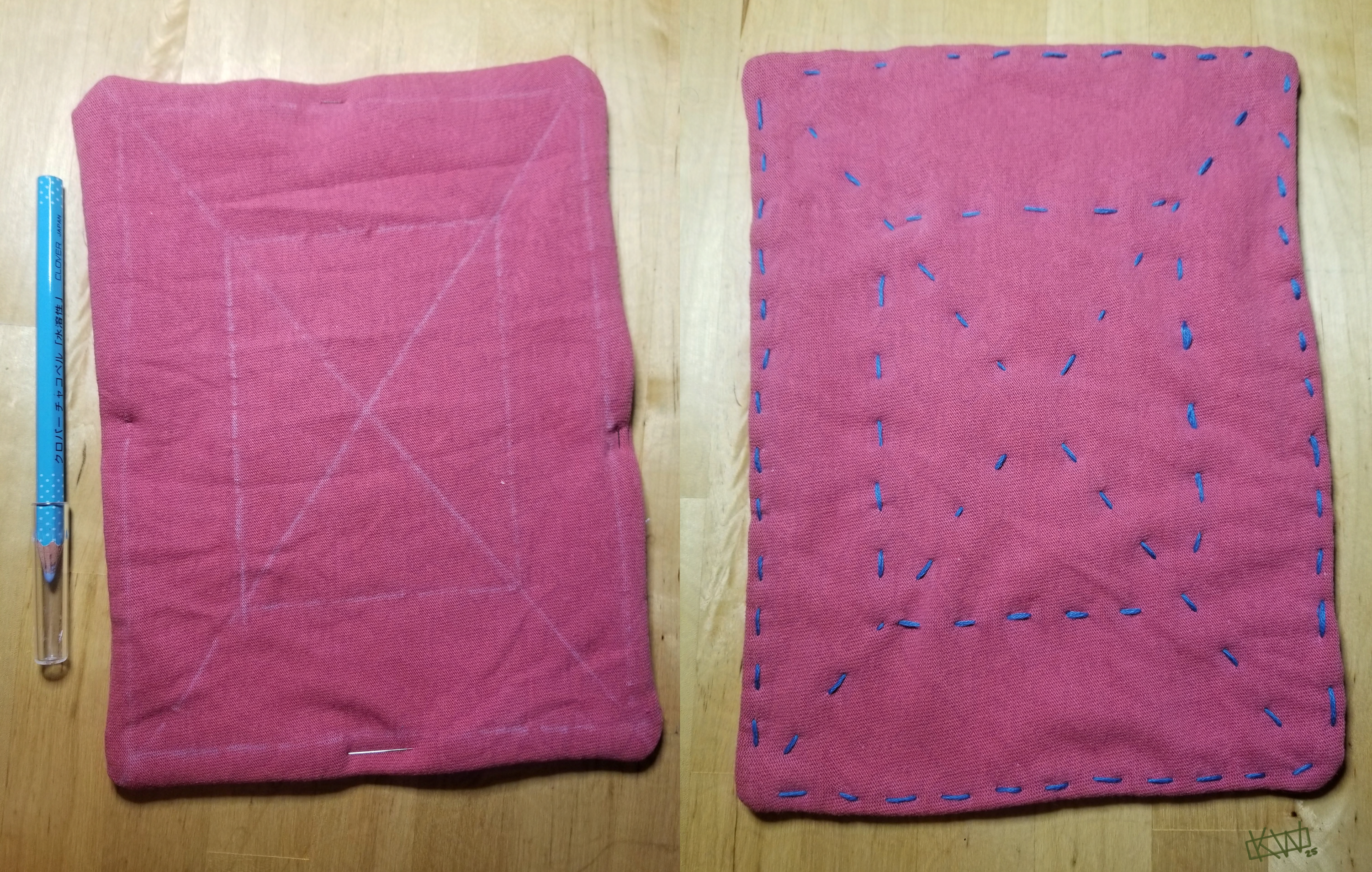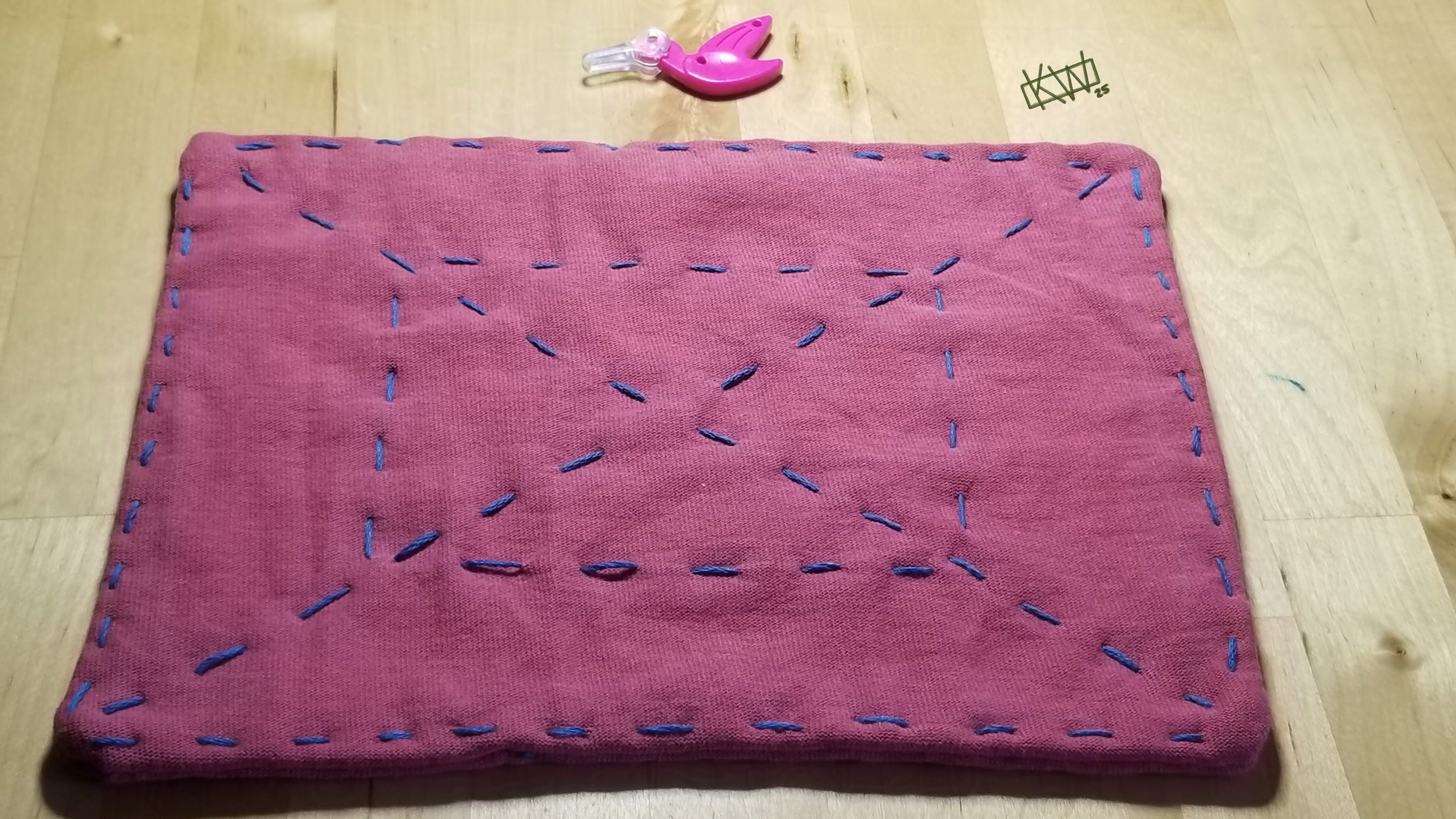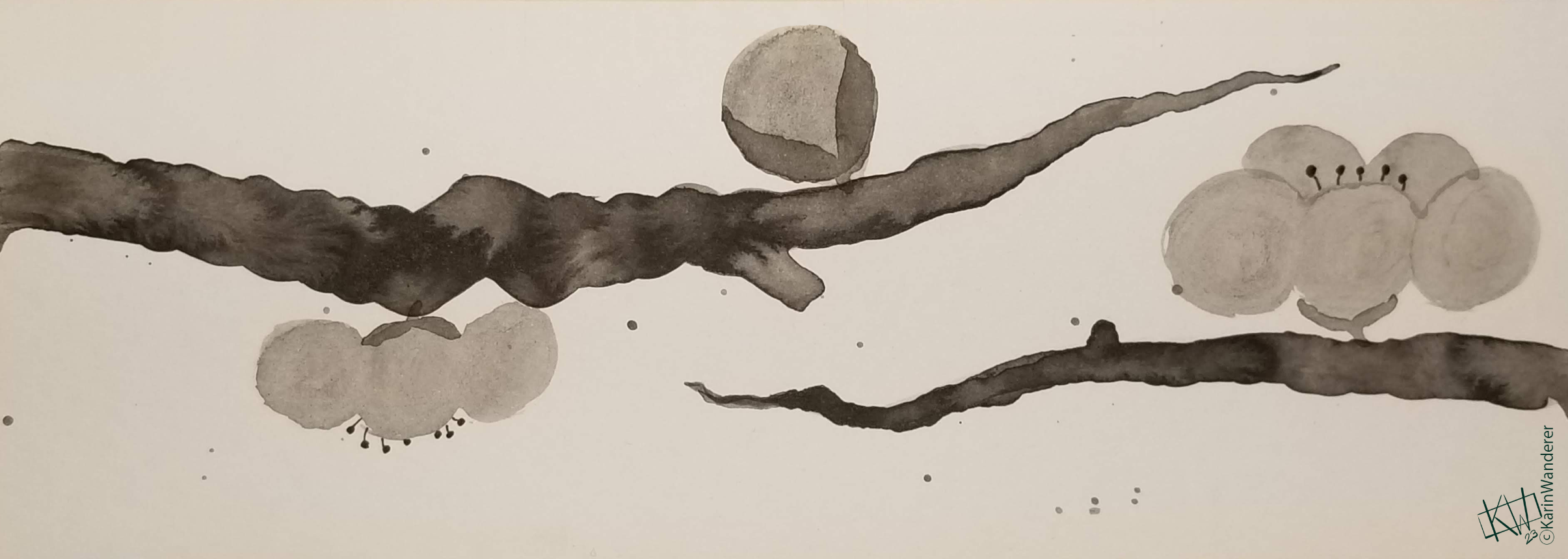 Sumi (Japanese Ink) depicting the Plum Tree, a popular sumi-e subject.
Sumi (Japanese Ink) depicting the Plum Tree, a popular sumi-e subject.
What Is Ink? When Did Ink Start?
Writing is a concept that fascinates humans almost from birth. Around age three most children start to understand the distinction between writing & drawing. Children who have not yet learned to write will often make scribbles lined up horizontally or vertically, with left or right alignment, according to whatever style of text they have been exposed to the most. Is it any wonder that a medium that we invented to write with should be equally fascinating?
Ink has existed for at least 4,500 years. People in China & Egypt are both credited with discovering ink at the same time. (This is called Simultaneous Invention & it happened with the wheel, too.) I have to say ink is “at least” 4,500 years old because there is some debate over when people started using ‘ink’ as opposed to ‘paint’. The debate rages on in large part because of a coexisting debate over where the line is drawn between what is ink & what is paint.
What Makes It Ink, Not Paint?
There are many different kinds of ink, & many kinds of paint. Sometimes the only difference is that you use paint to cover a wall, & ink to write a letter. Most of the differences can only be discussed as generalities. Paint is usually more lightfast, whereas ink is generally a “fugitive” pigment unless it is specifically designed to be long-lasting. Ink has the consistency of water, while paint is often thicker. Paint usually changes the texture of any surface it covers, but ink usually doesn’t. Natural inks mostly come in blacks & browns, whereas natural paints come in a rainbow of colors. Inks are made with very small pigment particles that dissolve easily, while paints often use larger particles that may dry with a slightly grainy look. In short: you could apply most ink with a paintbrush, but most paint could not be applied with a fountain pen.
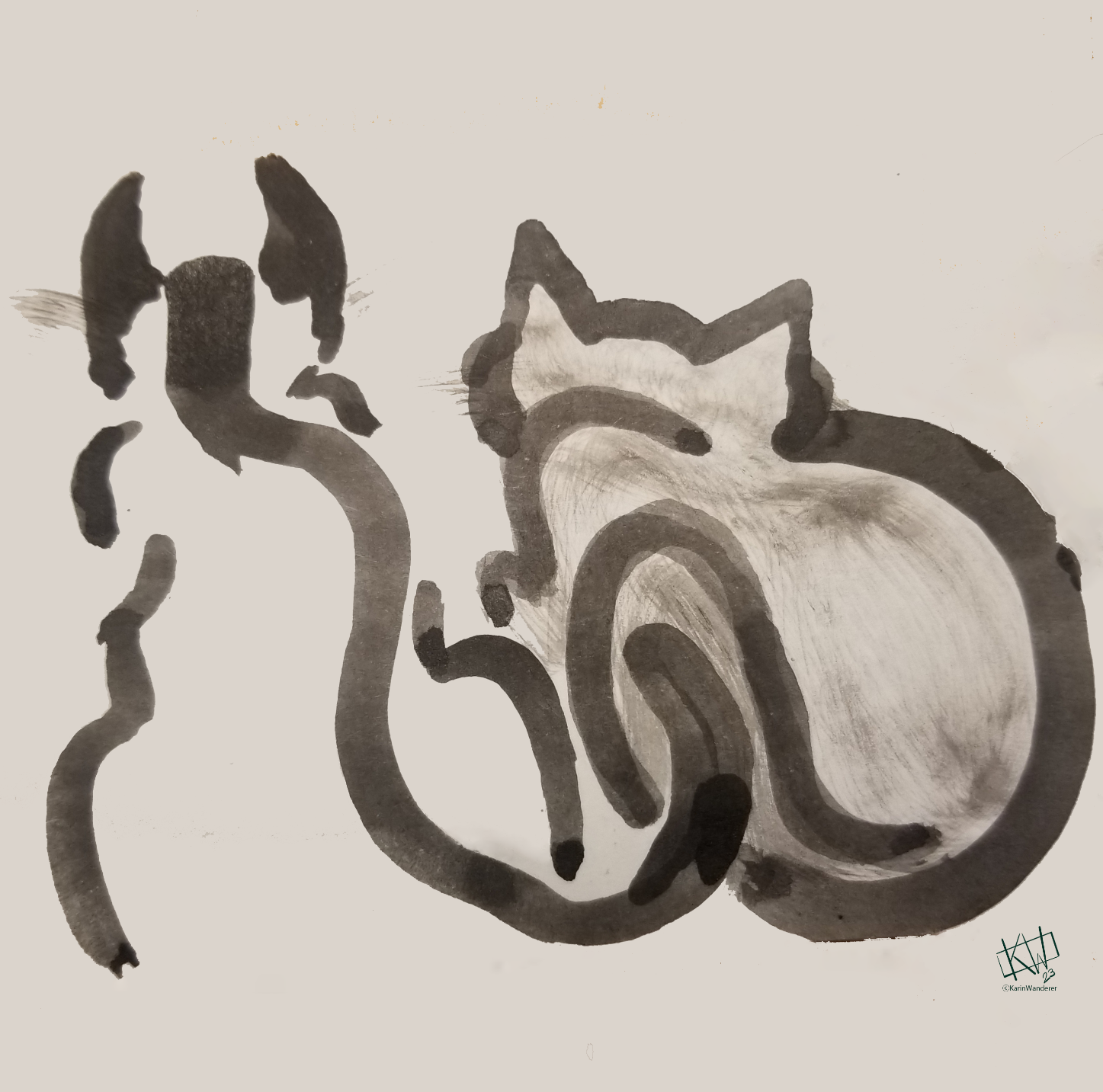 Sumi (Japanese Ink) depicting cats, a popular subject in every form of art.
Sumi (Japanese Ink) depicting cats, a popular subject in every form of art.
How Many Types of Ink Are There?
There are many many many types of ink. So many that no one can agree on how many, exactly. Different inks have different ingredients &/or use different methods of preparation. The earliest inks got their color from a variety of natural materials. Egyptians used inks made of pigments such as ochres, which are also the colorants used in some of the earliest paints. Many inks, such as India Ink (which is actually Chinese) & Sumi (Japanese), are carbon inks- they are pigmented by soot. Whether the ink is a cool black or a warm black depending largely on what is burned to produce the soot & what the soot is mixed with to make it into ink- often water & a binder such as gum arabic, which is also used in watercolors. There was also cephalopod ink which dries to a shade of brown called ‘sepia’, because of the Latin name for the cuttlefish it was harvested from: sepia officinalis. Other inks were made from chemical precipitation formed from ingredients like oak galls & iron sulfate. I have made inks from crushed berries & vinegar (pretty successfully) & walnut shells (pretty unsuccessfully). Dyes that work with synthetic inks were discovered by a chemist named William Henry Perkins while he was trying to cure malaria, & now ink comes in any color you like.
While many inks are 100% synthetic, not all of them are. Even today, many inks are made with animal-based glue & other non-vegan ingredients, so if this is important to you it is something you must be very careful about! Always check thoroughly: Check the type of ink, the brand of ink, & the specific color of ink you are purchasing. I started using sumi because my favorite artist does, back before it ever occurred to me that ink wouldn’t be vegan. (While I am not personally vegan, I do prefer to know when I am using something that contains animal products!)
Which Ink Do Artists Use?
Some artists remain devoted to one type of ink, or have different types designated for different jobs. Some artists have a more free-for-all approach. Bill Watterson, of Calvin & Hobbes fame, uses India ink & watercolors. Stan Sakai, creator of Usagi Yojimbo, uses Sumi & watercolors. Suisen Nakatani, a kokotsu-bun specialist, also works in Sumi. Alphonso Dunn uses an impressive array of inks & pens with his watercolors. Cheriue Ka-wai Cheuk is an expert in the gongbi painting style, which is specific about all the tools an artist uses. The ink an artist works with is a very personal decision.
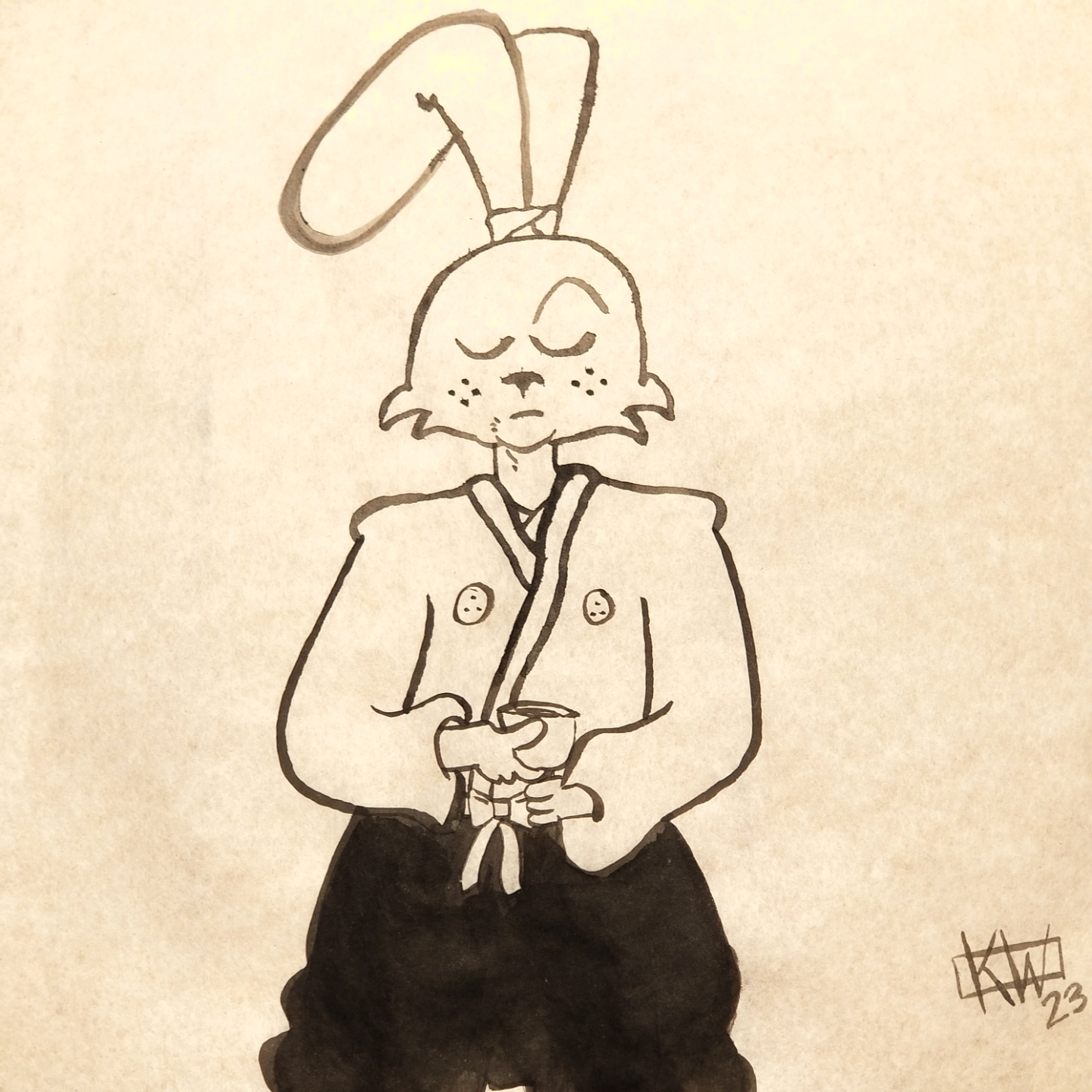 I work with Sumi because I, personally, am a shameless Sakai fangirl.
I work with Sumi because I, personally, am a shameless Sakai fangirl.
The best ink is…
Sumi. Why? Because it’s the one I use. I told you, it’s a very personal decision! Sumi is a traditional Japanese ink. How long ago was this tradition established? Well, long enough that the word sumi literally means black ink in Japanese! This undiluted ink is a glorious black, & when diluted it gives a lovely range of grays to play with. It is permanent, with certain types used for tattoos. This ink is preferred by my favorite artist (Stan Sakai) as well as my second favorite artist (me).
How Is Sumi Made?
Sumi, as we've said already, is a carbon ink is made from soot (often from pine resin or rapeseed oil) mixed with water & animal glue (often egg whites or fish skin). Sometimes incense, or other pigments/ingredients are added, but they are not required. This makes a soft, claylike lump that is kneaded until it is a glossy, uniform black. It is then pressed into molds and left to dry. It can be used immediately once dried, but sumi sticks are believed to improve with age.
Is It Always A Stick?
Today, Sumi can be purchased in many forms. The traditional ink stick required you to use a grinding stone to mix the ink with a small amount of water to create the ink. While I do have a few small ink sticks & a stone, most of the ink for my paintings come out of a bottle. (#NotSponsored but I love this ink so I’ll tell you about it anyway!)
Sumi Rumors I Keep Hearing But Can’t Prove… Yet.
- A 70-year-old stick is “perfect”, which is to say it is nicely aged but not so old it has become crumbly. A crumbly ink stick is not wasted, it can be mixed with new animal glue and re-formed into a new ink stick. The new stick will then need to be re-aged, as it is the animal glue partially decomposing that makes it “nicely aged.”
- The highest quality sumi is a neutral grey when diluted. High-to-middle quality sumi is often blue-grey when diluted. Low quality is brown in tone.
- The highest quality of undiluted sumi reflects the least light, both wet & dry.
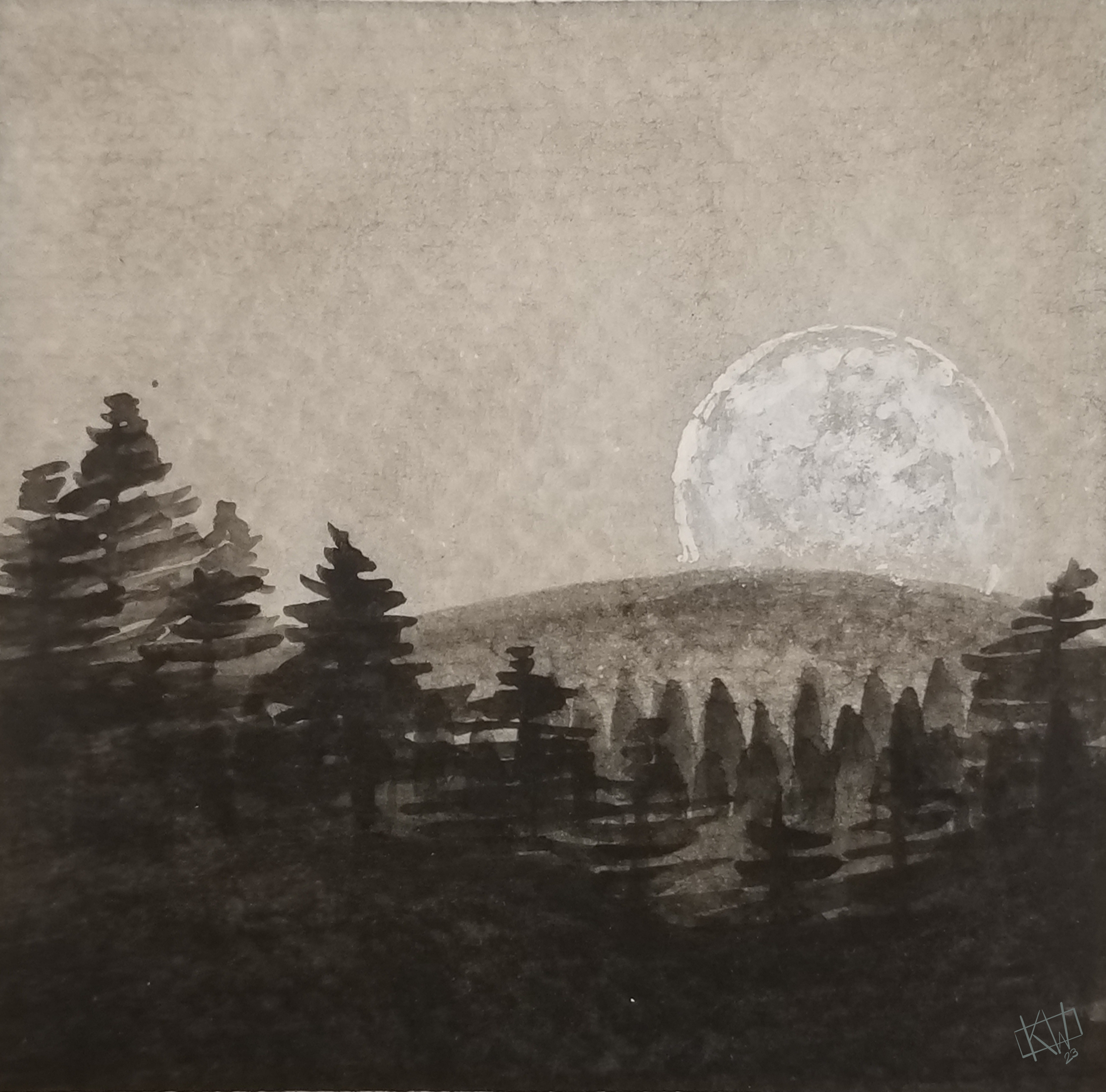 This was painted with the sumi linked above & white gouache.
This was painted with the sumi linked above & white gouache.
What do you think? Have you ever used sumi? Are you going to try? Let me know on Mastodon or Ko-Fi!
Have a fantastic day, draw something for my art challenge, see you next week!
Get my art on mugs & vinyl stickers in my Shop!
Join us for #ArtABCs, the best art challenge on the internet!
- All pictures posted are my own work.
- All reviews are my own unpaid & unsolicited opinions.
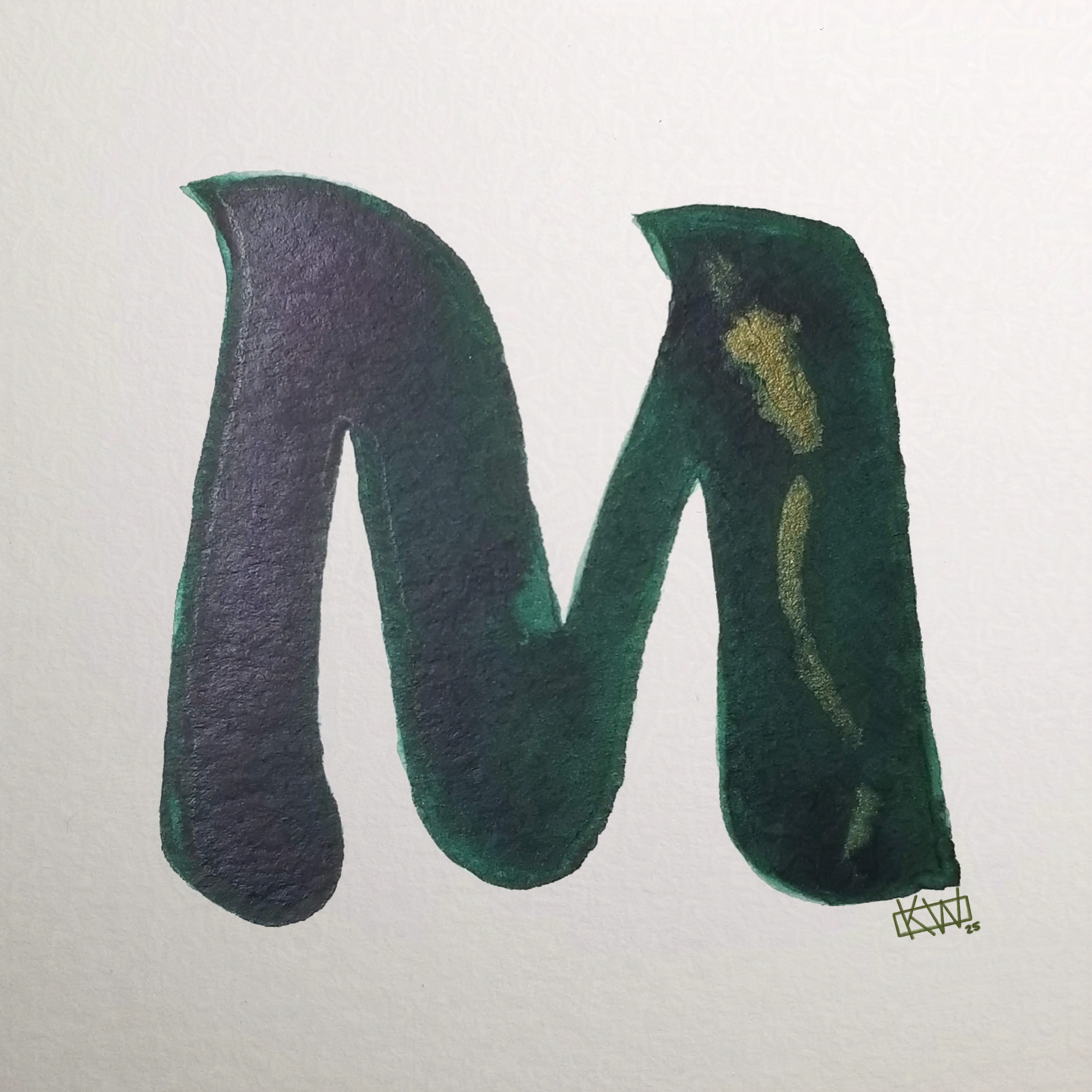
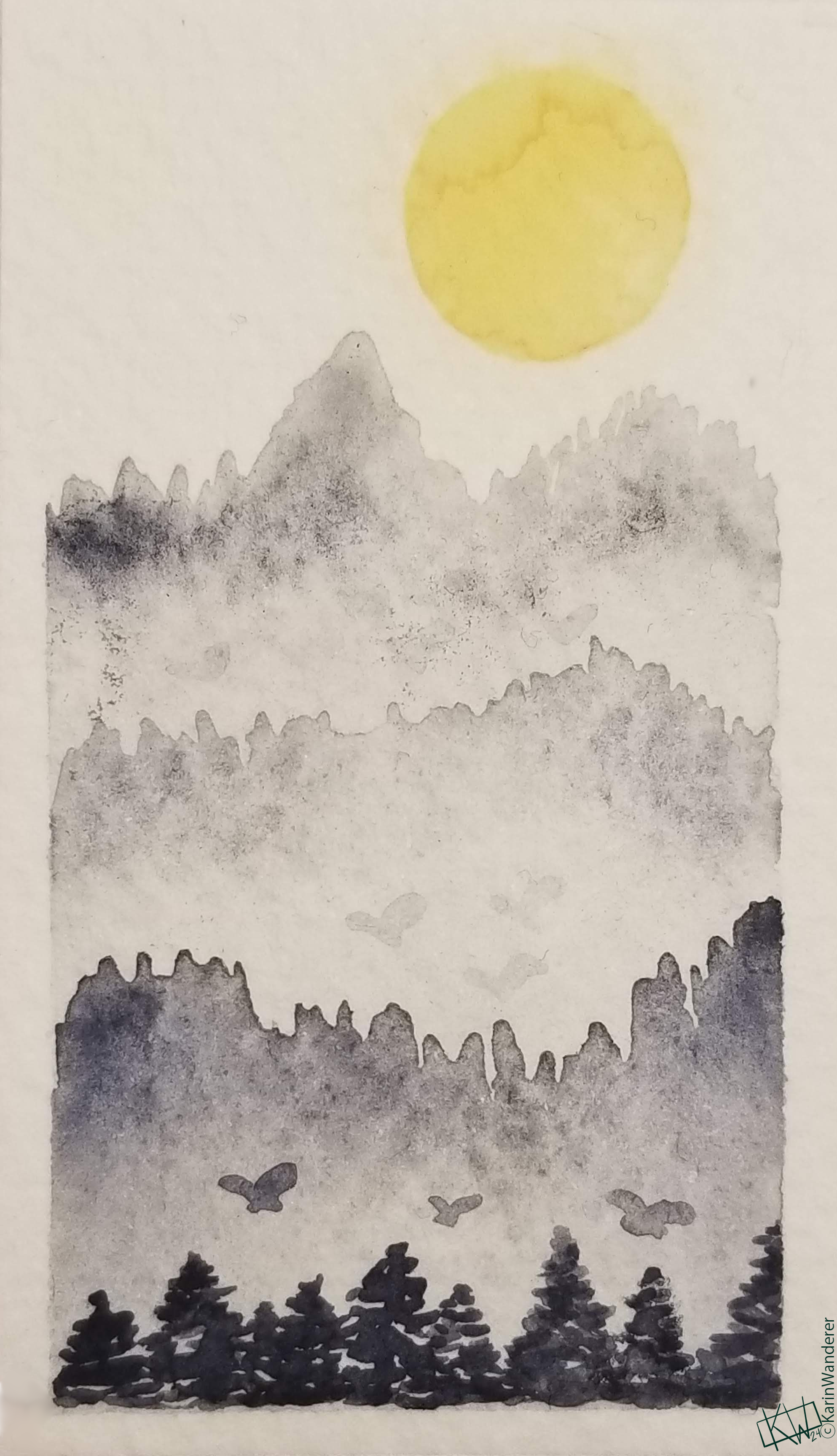 M is for Mountains
M is for Mountains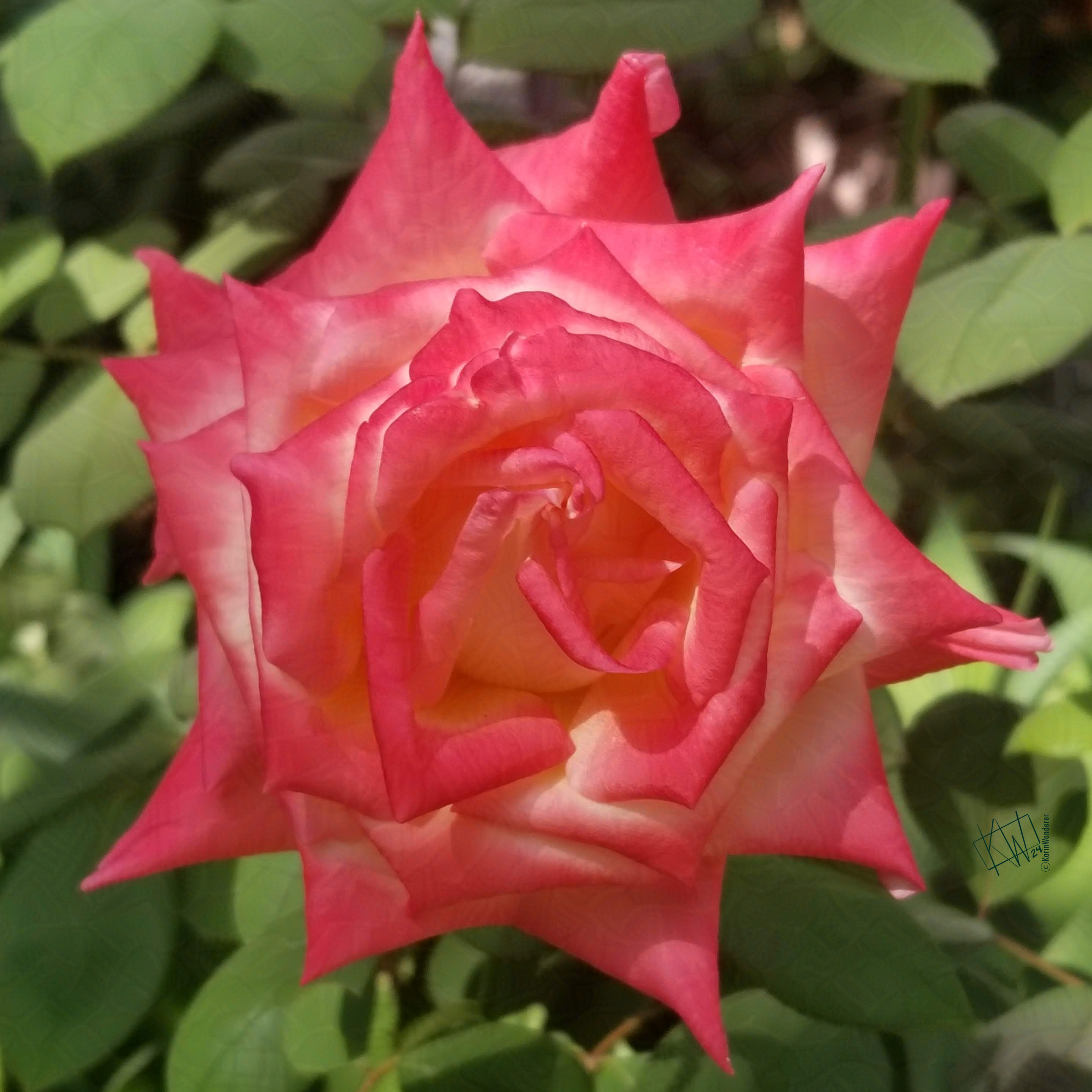 I am going to miss seeing gorgeous gardens all year long.
I am going to miss seeing gorgeous gardens all year long.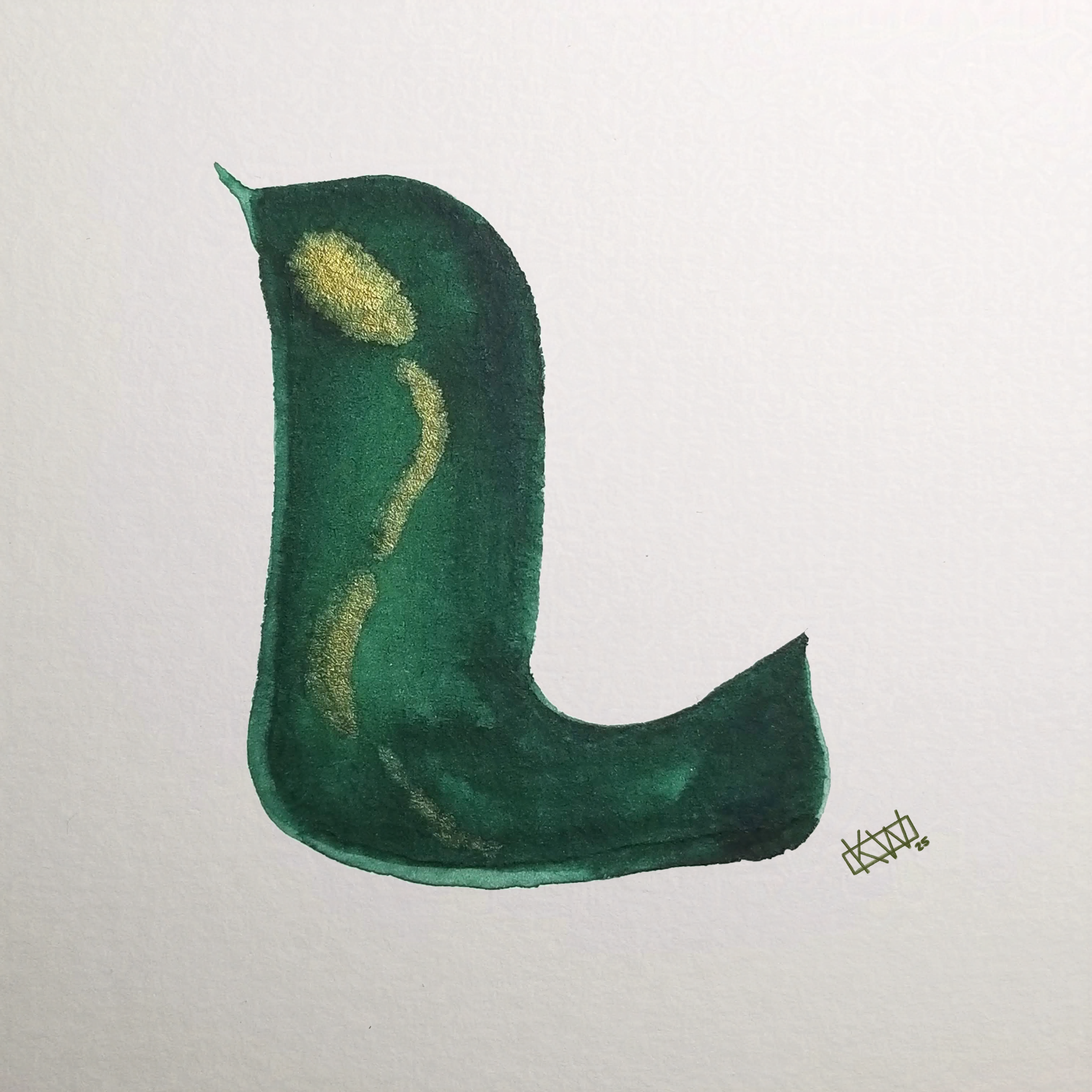
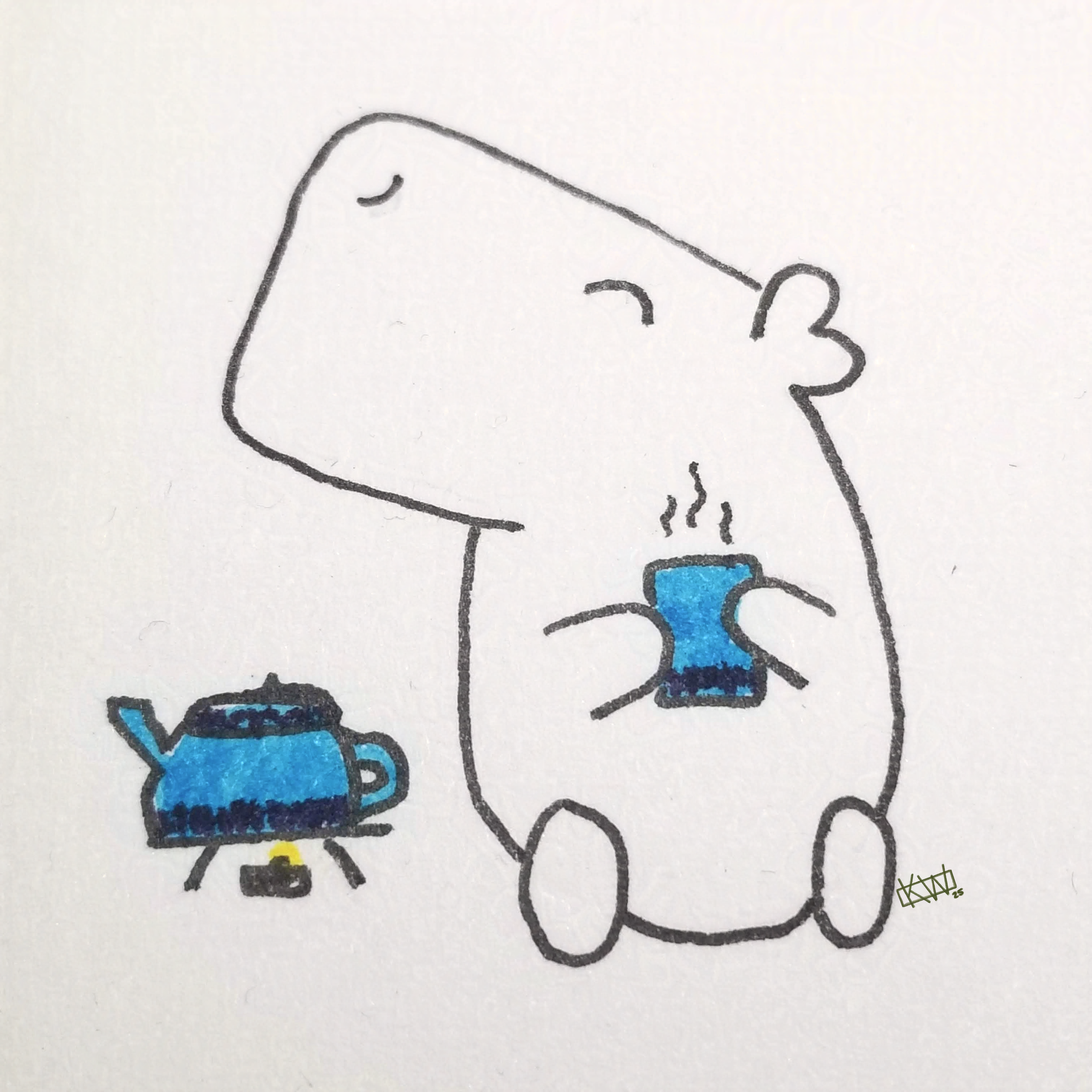 L is for Look At This Laid-Back Lil Friend!
L is for Look At This Laid-Back Lil Friend!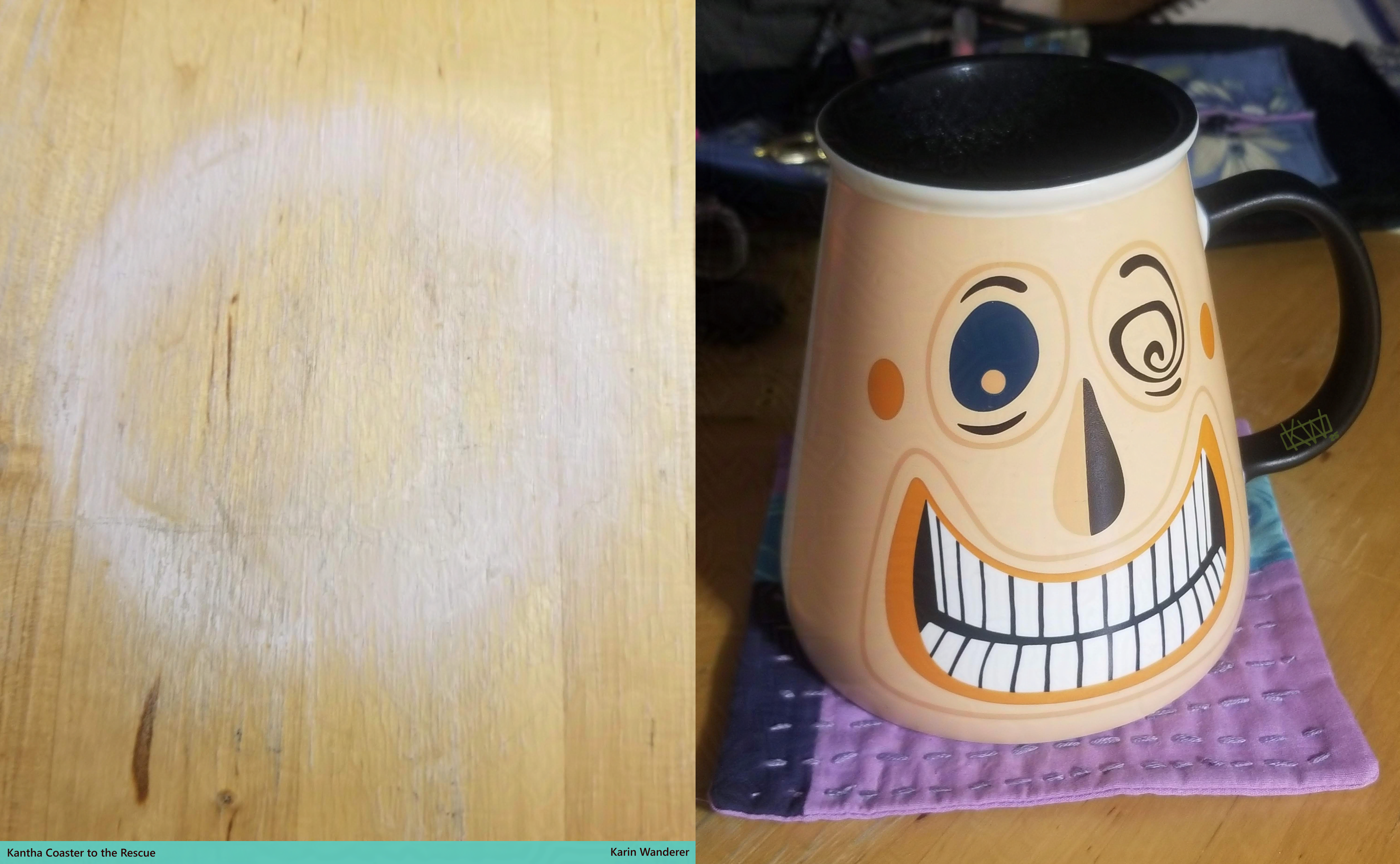 How It Started vs. How It's Going
How It Started vs. How It's Going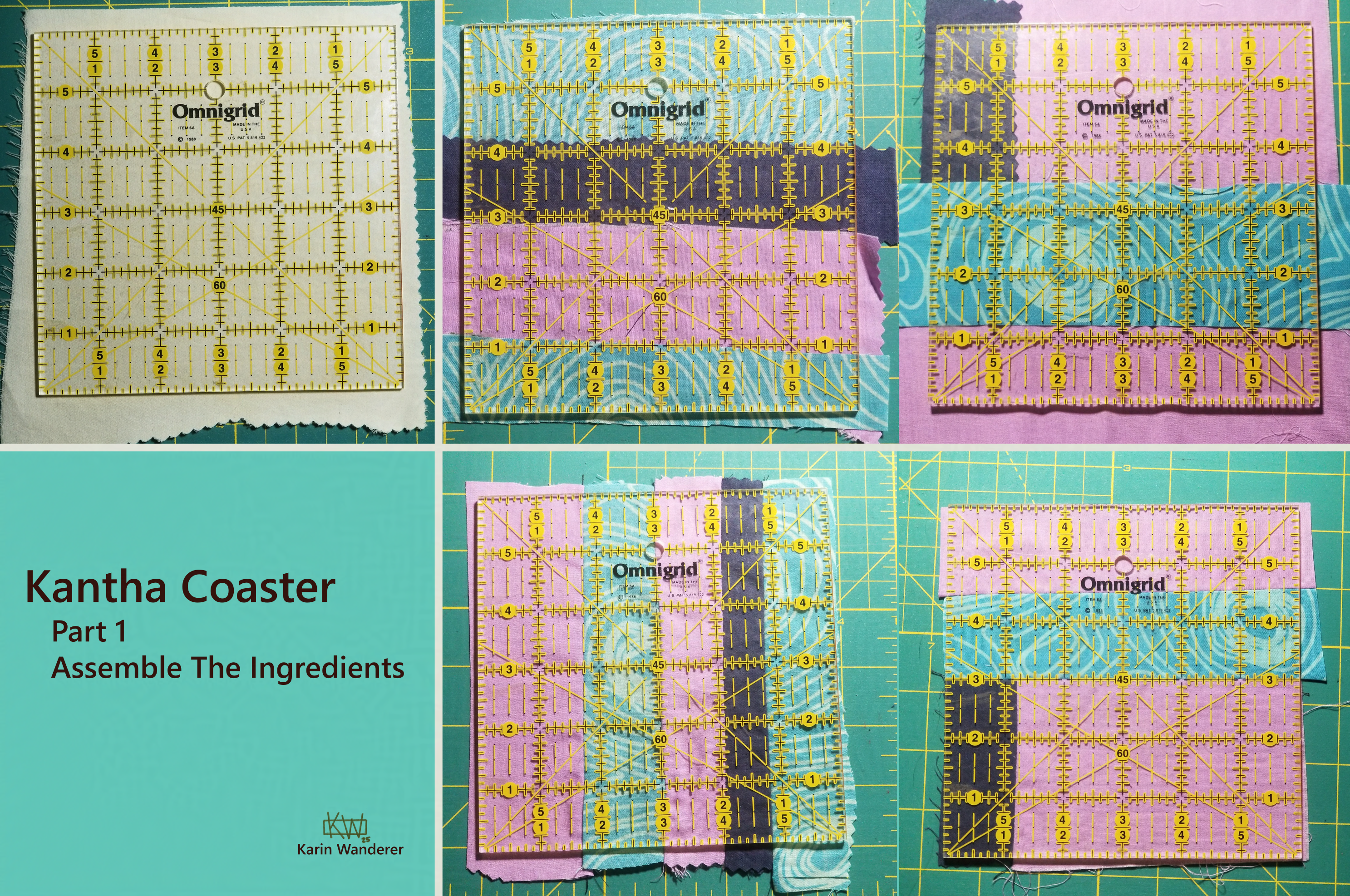
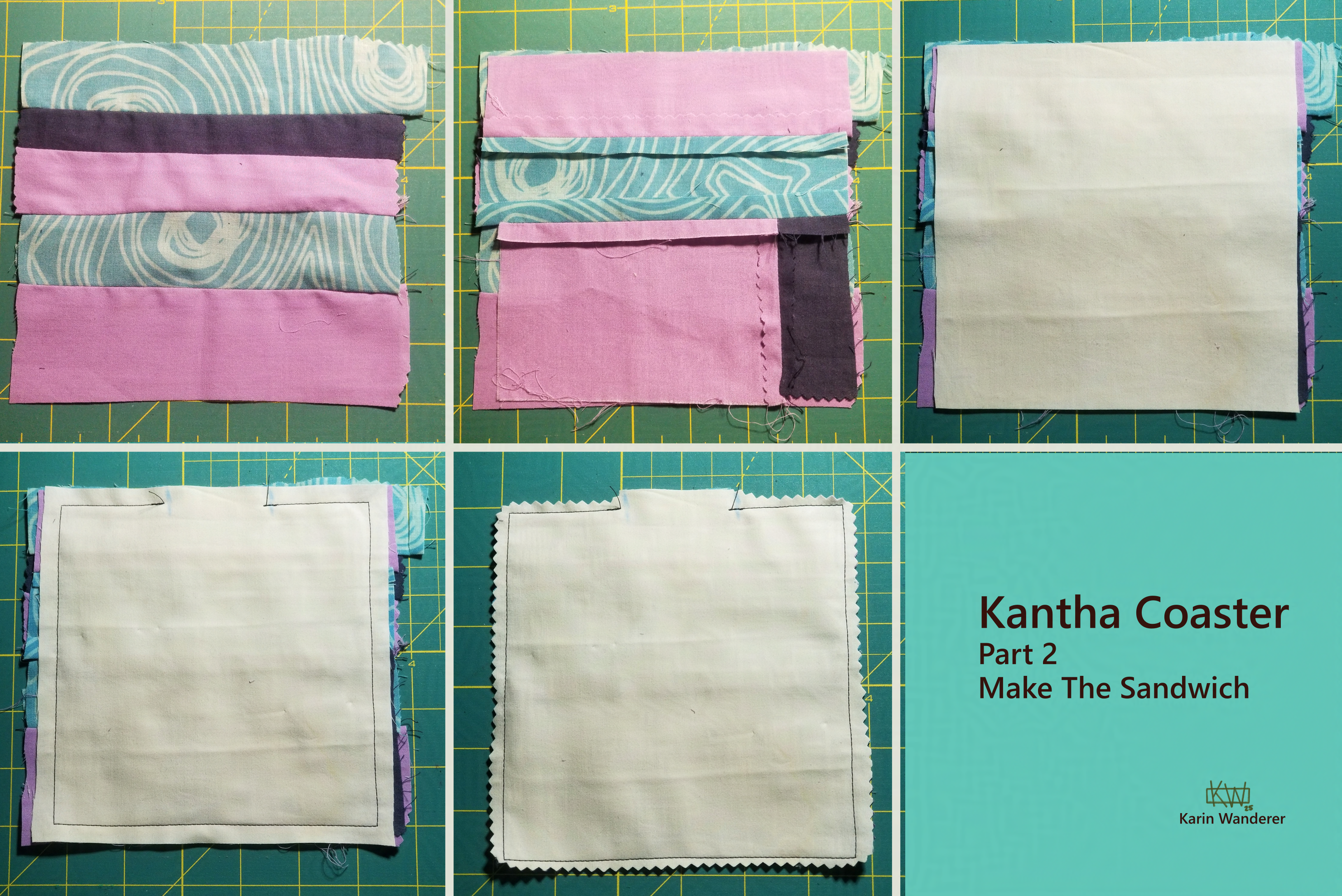
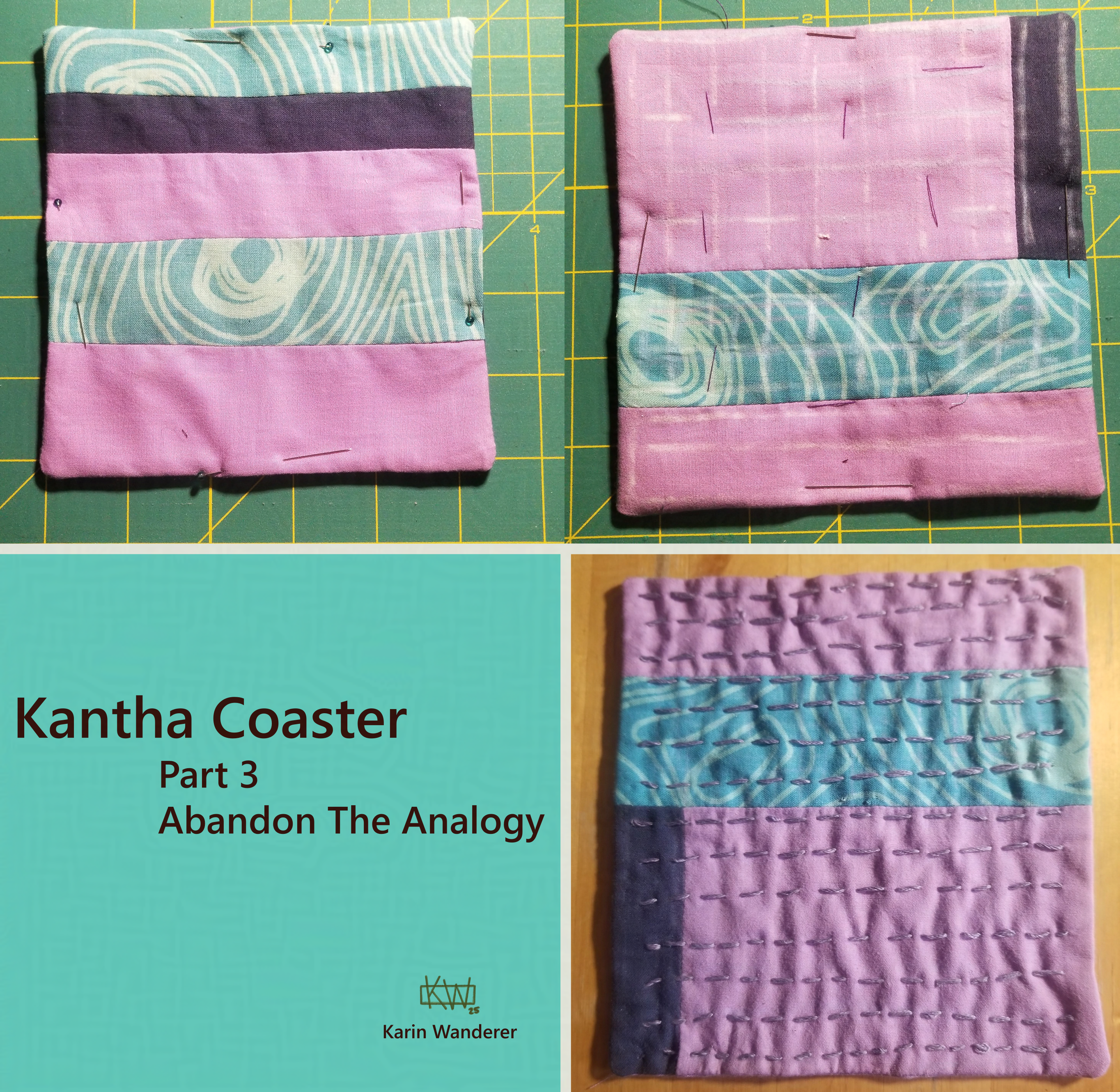
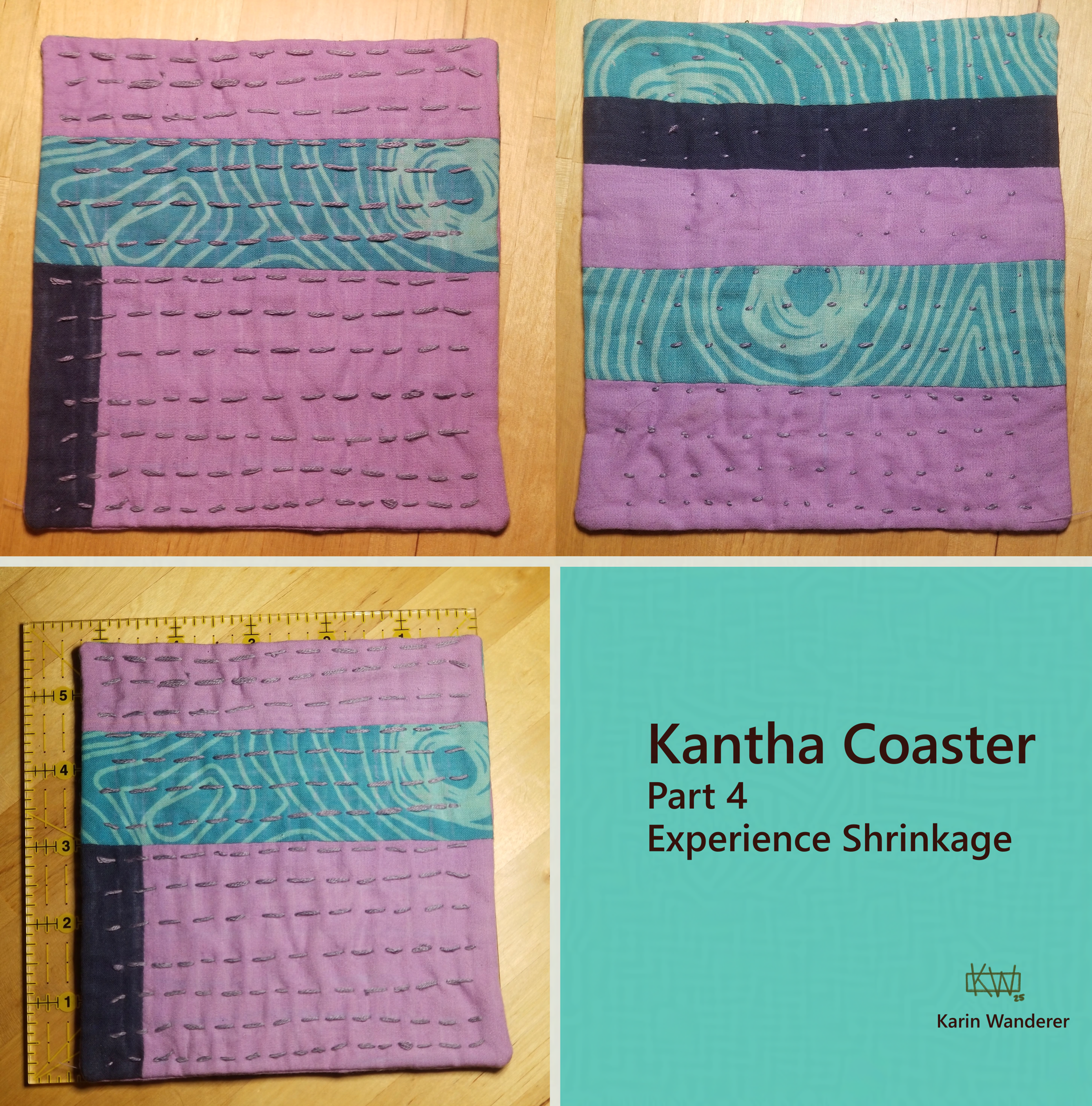
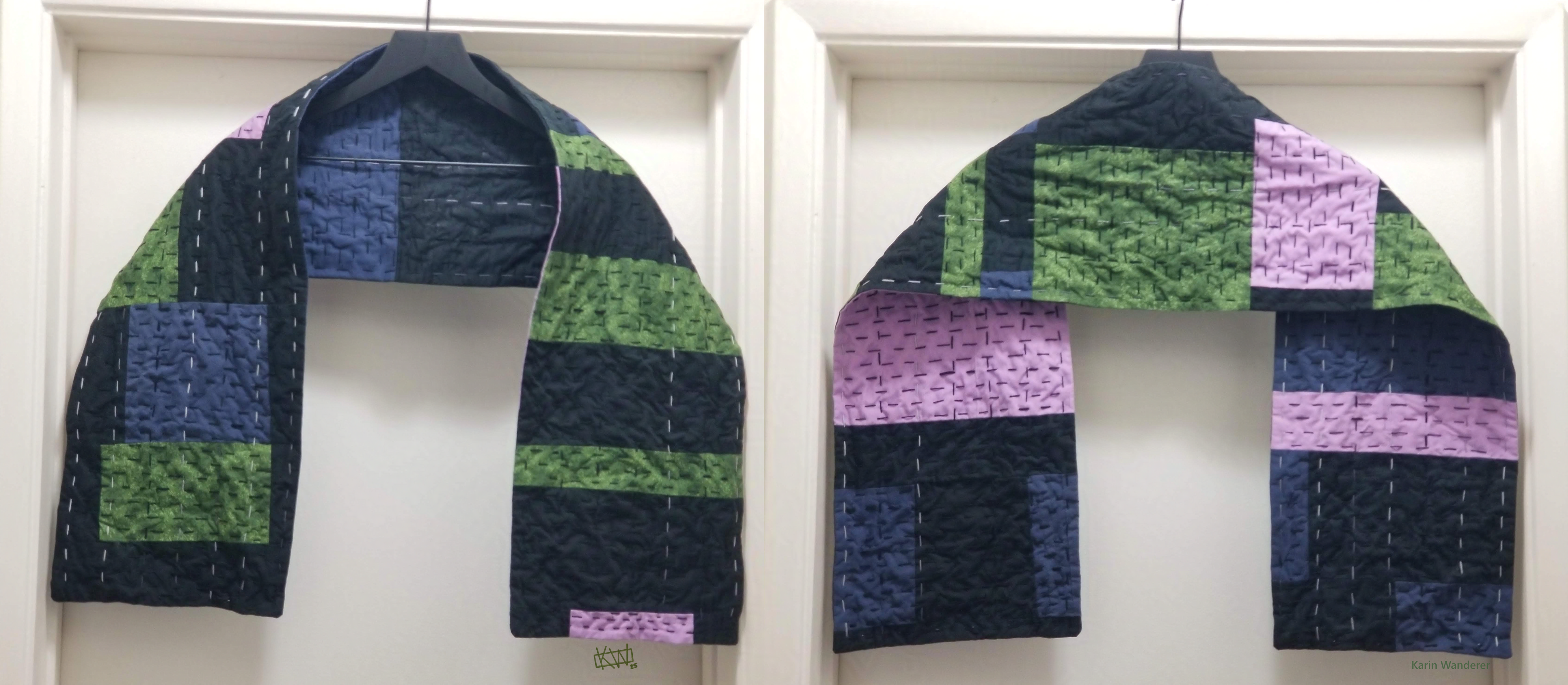 Scarf is finished! Now I'm starting on a shawl...
Scarf is finished! Now I'm starting on a shawl...
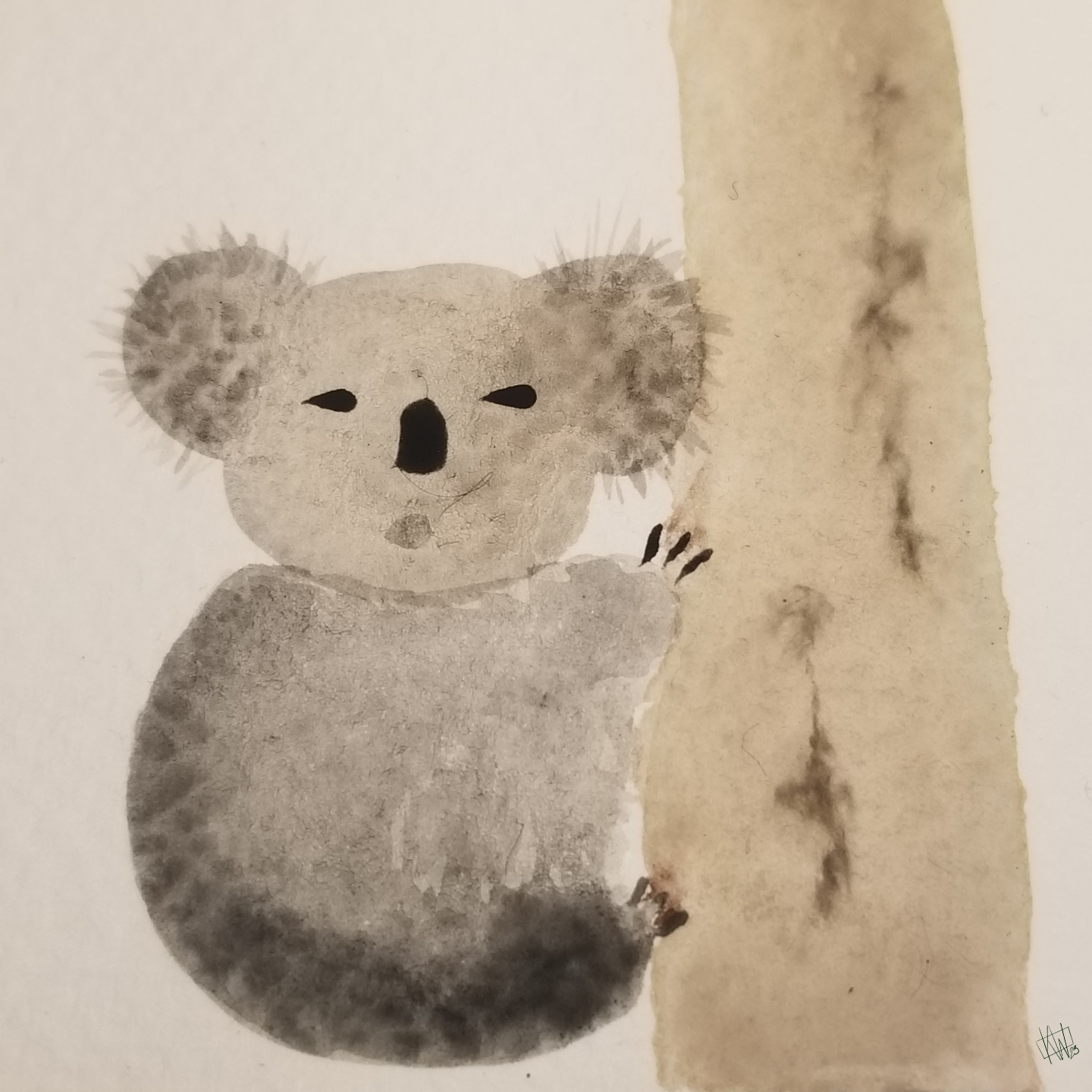 K is for Koala.
K is for Koala.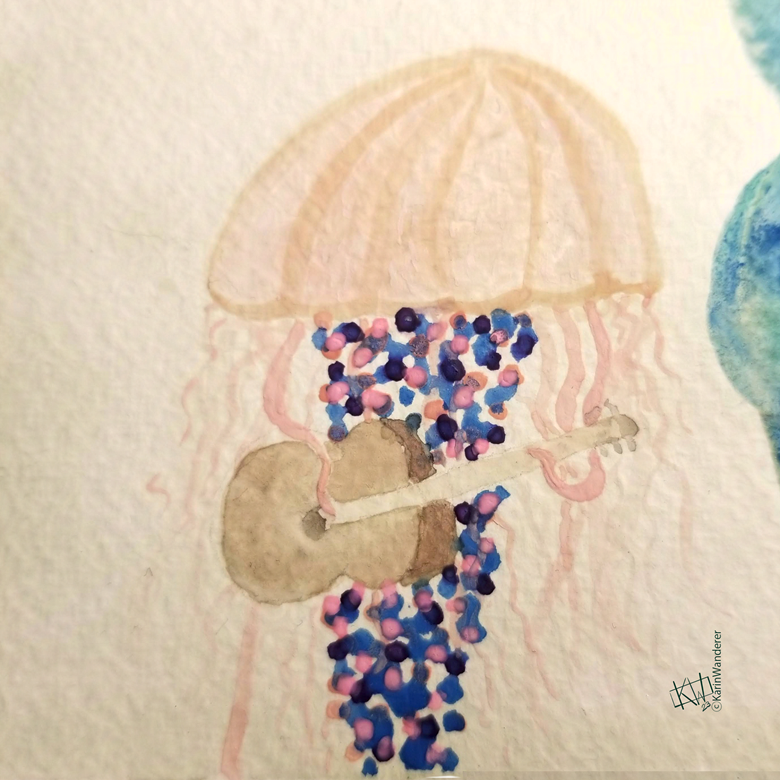 I will never be as cool as a sea jelly playing guitar.
I will never be as cool as a sea jelly playing guitar.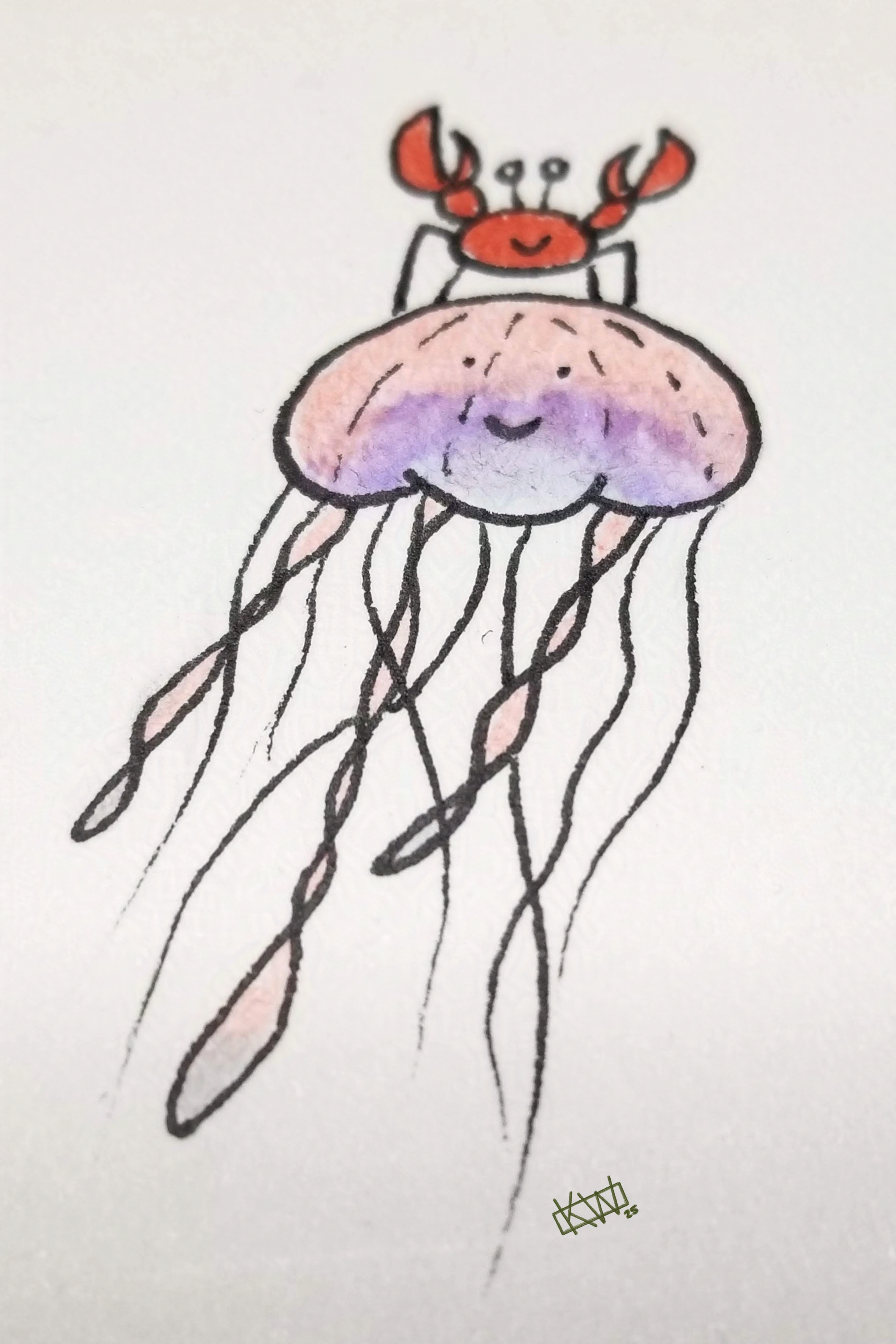
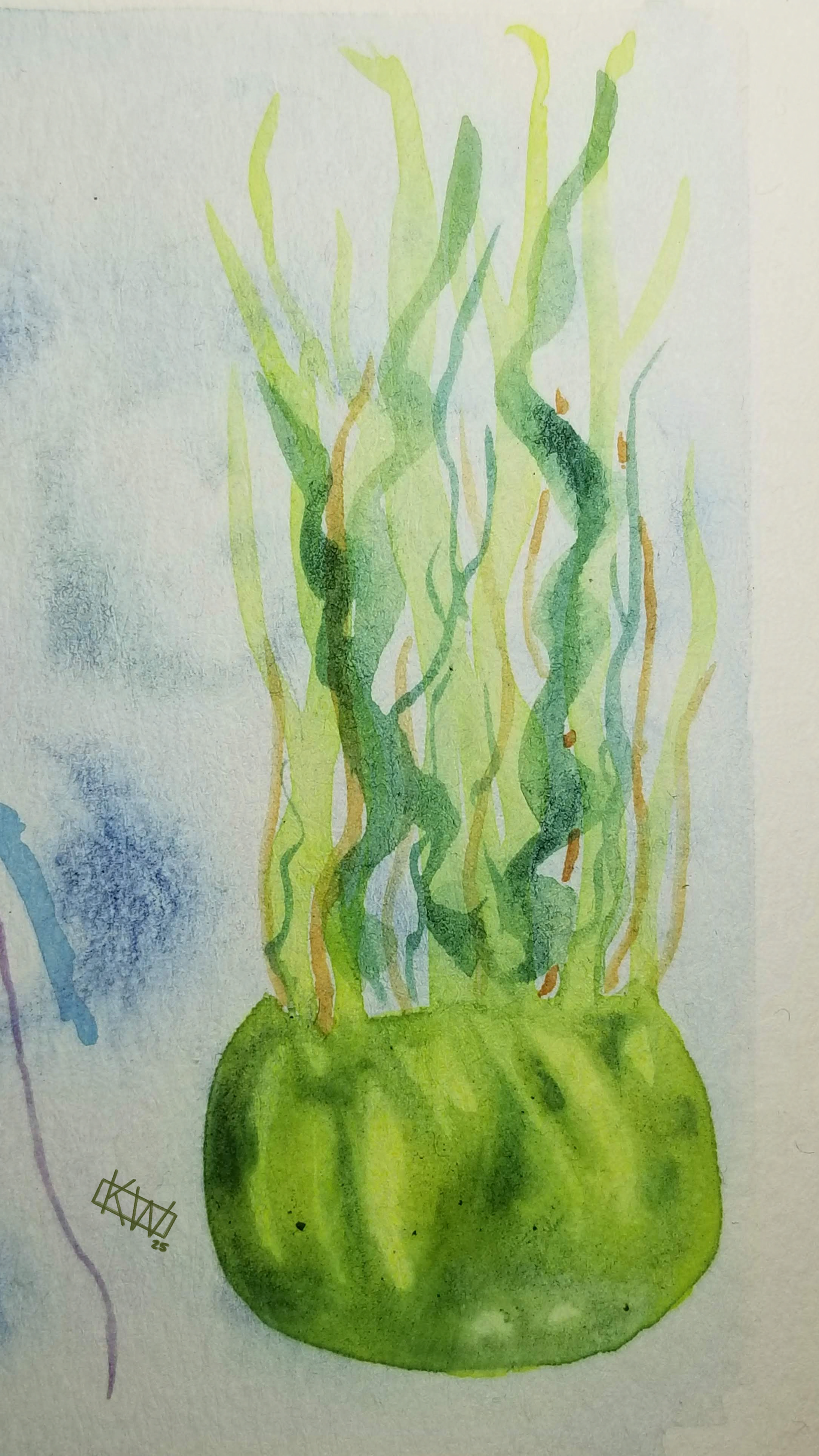
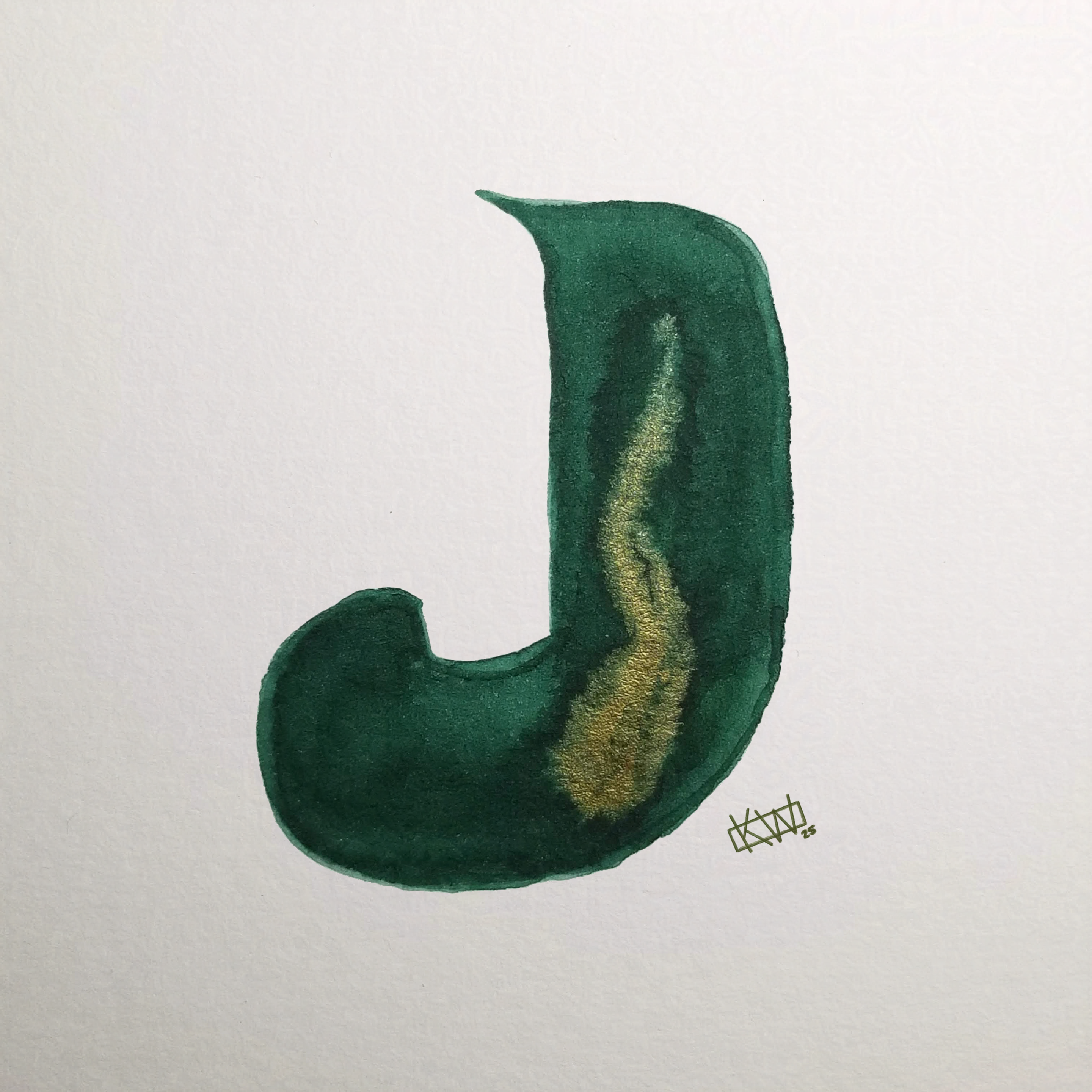
 J is for Jaws.
J is for Jaws. Sumi (Japanese Ink) depicting the Plum Tree, a popular sumi-e subject.
Sumi (Japanese Ink) depicting the Plum Tree, a popular sumi-e subject. Sumi (Japanese Ink) depicting cats, a popular subject in every form of art.
Sumi (Japanese Ink) depicting cats, a popular subject in every form of art. I work with Sumi because I, personally, am a shameless Sakai fangirl.
I work with Sumi because I, personally, am a shameless Sakai fangirl. This was painted with the sumi linked above & white gouache.
This was painted with the sumi linked above & white gouache.
 I is for Iris.
I is for Iris. Don't make fun of my stitches, I was sick!
Don't make fun of my stitches, I was sick!